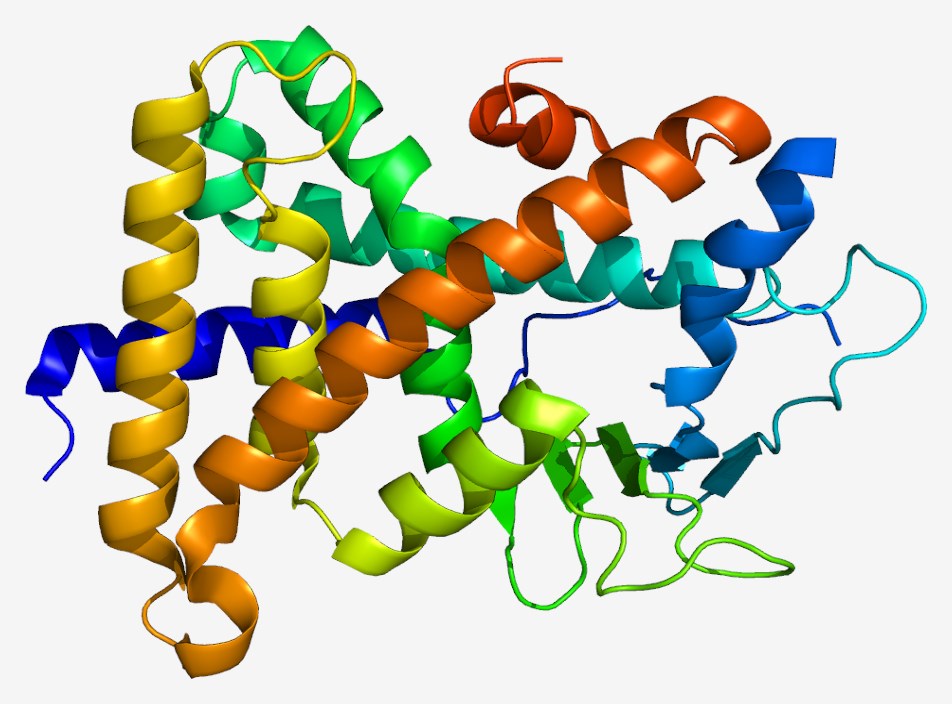NASH Target Development Service for Pregnane X Receptor (PXR) Activators
Pregnane X Receptor (PXR) is a very important nuclear transcription factor that is involved in the drug metabolism, drug-drug interactions, and homeostasis of glucose, lipids, steroids, bile acids. It has been reported that PXR regulates carbohydrate and lipid homeostasis, inflammation and fibrogenesis in NASH and is therefore considered a potential drug target for NASH treatment. Creative Biolabs is a pioneer in the field of NASH drug discovery for NASH therapy. We are confident in offering the first-in-class target screening, structural characterization, and functional profiling services for the identification of potential drug targets for NASH therapy based on our powerful technologies.
Introduction of PXR
PXR, also known as the steroid and xenobiotic sensing nuclear receptor (SXR) or nuclear receptor subfamily 1, group I, member 2 (NR1I2), is a ligand activated nuclear transcription factor that is encoded by the NR1I2 gene in humans. It is highly expressed in the liver and intestine. PXR can be activated by a variety of endogenous and xenobiotic compounds such as natural and synthetic glucocorticoids, steroids, pregnane derivatives, antiglucocorticoids, macrocyclic antibiotics, antifungals, and herbal extracts. The activated PXR can bind to its DNA response elements as a heterodimer with the retinoid X receptor (RXR) and recruit a host of coactivators such as steroid receptor coactivators 1 (SRC-1), exerting its transcriptional regulation. It is reported that PXR activation is associated with drug metabolism, drug-drug interactions and the homeostasis of numerous endobiotics, such as glucose, lipids, steroids, bile acids, retinoic acid, bilirubin, and bone minerals. Furthermore, some studies have demonstrated that RXR regulates the expression of enzymes and transporters involved in drug metabolism, exerting an important role in xenobiotic and endobiotic metabolism.
 Fig.1 Structure of the PXR protein. Distributed under Open Access License CC BY-SA 4.0, from Wiki, without modification.
Fig.1 Structure of the PXR protein. Distributed under Open Access License CC BY-SA 4.0, from Wiki, without modification.
PXR Activators Applied for NASH Treatment
In addition to function in the metabolism and degradation of drugs and xenobiotics, PXR is also an essential regulator of metabolic and inflammatory pathways in hepatic and extrahepatic tissues. Genetic screening and functional studies have shown that PXR is involved in the regulation of carbohydrate and lipid homeostasis, inflammation and fibrogenesis in NASH. In cultured hepatocytes and hepatic stellate cells (HSCs), PXR activation inhibits apoptosis of hepatocytes and activation of NF-kappa B, enhances autophagy of hepatocytes, eliminates inflammatory and fibrotic reactions to bacterial lipopolysaccharides, thereby ameliorating hepatic necrosis, inflammation, and fibrosis in NASH rodent models. Therefore, it is indicated that PXR may have potent anti-inflammatory and anti-fibrotic properties. These data suggest that PXR activators may be a potential therapeutic target for NASH treatment.
Creative Biolabs is rich in experience with drug target discovery. Equipped with advanced technologies and skilled expert team, we can offer high-quality target construction and custom target screening services to meet our clients’ demands precisely. Especially, our service items include antibody development (e.g. Phage Display & Antibody Library Services, Antibody Analysis Services, Antibody Engineering Services) and the one-stop service of NASH drug discovery. If you have any special need for NASH services, please feel free to contact us for more details.
 For Research Use Only.
For Research Use Only.